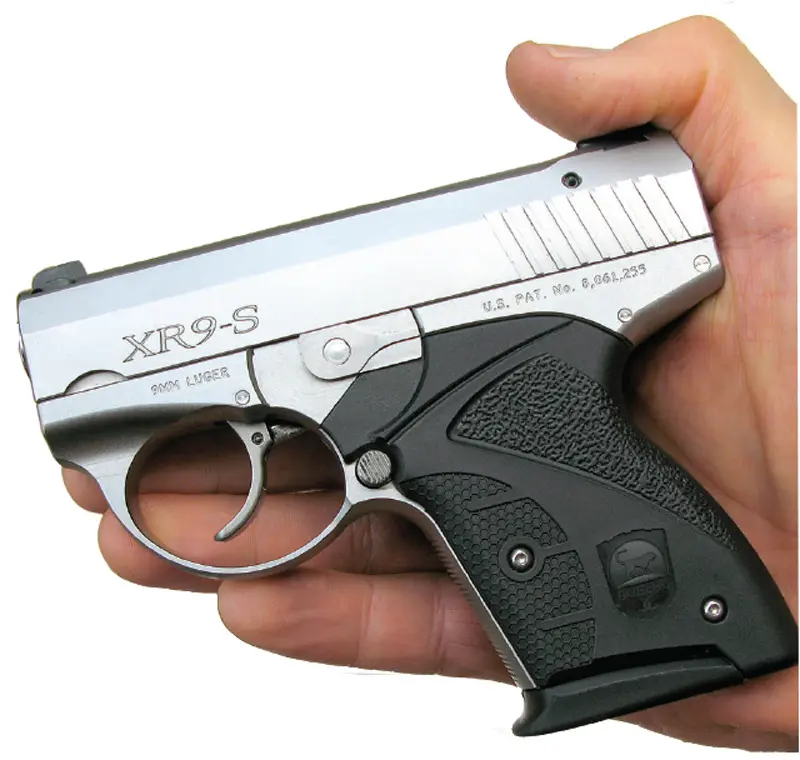
Boberg Arms’ small and compact 9x19mm pistols are unique and represent a stark departure from blowback or short-recoil locked-breech operated handguns. There are two models, Shorty and Long, with three variants each—Onyx, Platinum and Two-Tone.
Although Boberg’s rotating-barrel–lockedbreech action traces its genesis to the turn of the century’s revolutionary Gabbert–Fairfax Mars pistol that launched a 220-grain .45 ACP round at 1,250 feet-per-second (fps), it really parts company with other contemporary rotating barrel designs with its rearward-forward cartridge chambering action that is also employed by some heavy machine guns.
However, this perceived complexity results in a short and compact pistol with a relatively long barrel that attempts to rival the performance of larger and more conspicuous handguns.
Table of Contents
PLATINUM KNUCKLE DUSTER
Because of the current popularity of small and highly concealable firearms, I selected Boberg’s XR9-S “Shorty” model for review. Boberg principal Mark Dante sent me their Platinum version, the most expensive of its two other Shorty siblings— the all-black Onyx and Two-Tone offerings. The Platinum Long will set you back another $50.
To add a little spice to the mix, he included a “long” 4.2-inch barrel for velocity comparisons. It’s a handful of hell for the gremlin on the receiving end, and its snubbed profile reminded me of the old Knuckle Duster Pepper Box revolvers of the 1800s.
9X19MM RESURRECTION
Packed into its 5.1-inch overall length is a 3.35-inch tube. Compared to Kimber’s excellent Solo Carry, the Boberg is 0.4 inch shorter with a 0.65 inch longer barrel, which resulted in a difference of 81 fps and 46 foot pounds of muzzle energy between the two with an unidentified load.
Handgun kinetic energy is a pretty nebulous factor when it comes to stopping a human bent on violence. The first and foremost feat the bullet must accomplish is adequate penetration so it can contact vital organs and destroy them. Bullet upset and expansion are valuable bonuses, because a larger wound channel destroys more tissue and causes more rapid blood loss, resulting in exsanguination.
Yes, the Boberg is a nine and the usual debate arises regarding the nine millimeter’s effectiveness. For some enthusiasts and “experts,” its caliber alone will have them skipping to the next article.
Folks, please be advised that a leading American law enforcement agency, which was one of the leaders in establishing the current terminal ballistic protocols, is seriously contemplating its return to the Parabellum round after several years of fielding handguns in .40 S&W.
Recent tests with a particular brand and weight of 9x19mm have confirmed that this round negotiates all intervening test obstacles as well as the slightly larger and heavier bullet, and also offers less recoil and higher capacity. The agency’s principals studying this possible transition also hope that hit ratios will improve with less distracting recoil.
SPARTAN ACCESSORIES
The Boberg arrives in the standard lockable and padded case with manual and documentation. Included are a second seven-round magazine and the politicians’ cable padlock for security.
Yes, I know what you’re thinking—pretty spartan for a stainless steel and aluminum framed $1,349 handgun. Not even a cleaning rod/brush, Tritium night sights or a laser? Appreciate that you are paying for innovation, where a lot of handwork is involved and the finest gun materials and components have been employed.
SUPERB SLIDE
The stainless steel slide of the XR9-S is block-like and tapers slightly toward its dorsal side, producing a flat sighting plane. Rear cut serrations and its overall finish provide sufficient purchase to manipulate it.
The ejection port is unusually cut and basically wide open. Although a gap between the bolt and chamber is evident, the opening is sealed by the cartridge when it seats into the bolt’s recessed face. The extractor is external, with a large extractor claw. Also visible is a portion of the unlock block.
Fixed and dovetailed steel, three white dot sights crown the slide. The rear is adjustable for windage only. Oddly, the relatively expensive Boberg does not include night sights as standard or at least an option.
FIRST-CLASS FRAME
The alloy frame (or receiver) is constructed of 7075 T-6 Aircraft aluminum and is perfectly matched to the slide. Finish is excellent externally and internally. The only way you can tell it is not ferrous metal is by picking it up sans slide, using a magnet or looking at the token fingernail-like serrations cut into the front strap. Aluminum doesn’t take checkering like steel does.
The XR9’s rounded and oversized trigger guard will accept a gloved finger. Its six- to seven-pound trigger is ergonomically curved but has sharp edges that should be rounded. Boberg offers trigger weight options from 6.0 to 7.5 and 9 pounds. The half-inch stroke is smooth with a little take-up and stacks slightly just before sear release. There is no trigger stop, but there is no overtravel. When you dry fire the pistol, there is a lot of spring vibration.
The trigger guard is undercut to foster a high grip, in concert with the back strap’s beavertail. A small magazine release button is set up for right-handed shooters and is protected from inadvertent release by its relatively smooth plastic stocks. However, I could not operate the magazine release even after relinquishing my firing grip. The pistol’s ergonomics make it difficult to do so, but a slightly larger and extended release would alleviate that problem.
When the release is punched, empty magazines do not exit unless manually extracted by the support hand. The grip accepts a two-fingered hold and its ergonomics make the Boberg a natural-pointing pistol suitable for target focus defense at close ranges.
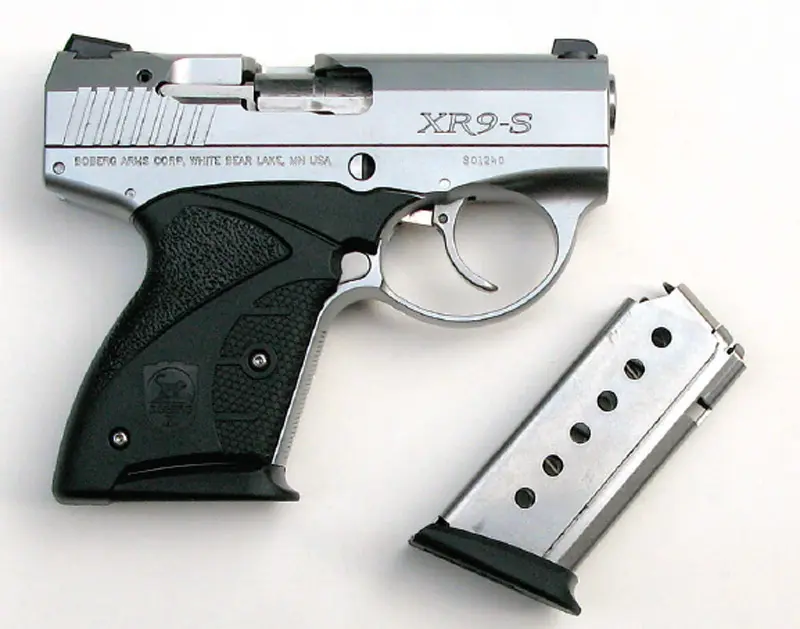
OUTSTANDING BARREL
Although triggers are very important for delivering accurate fire, the barrel is at the heart of the inherent accuracy equation. Boberg’s tube is a button rifled and crowned premium stainless steel barrel with 1:16 right-hand twist. It’s a semibull barrel, and primary lock-up occurs at the aft unlock block and slide.
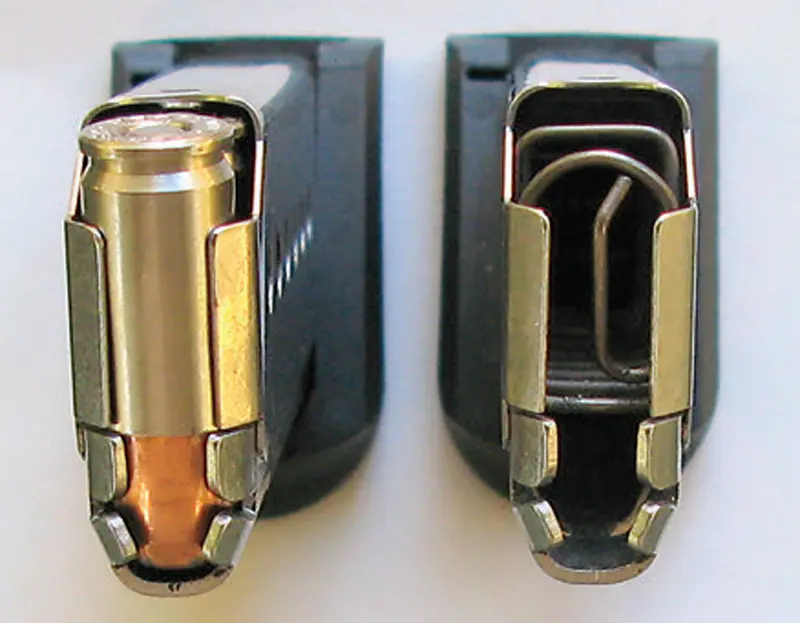
The barrel has three male camming/locking lugs on its exterior that mate with the camming slots in the unlock block and slide. This marriage results in barrel rotation during the unlocking and locking phases of operation.
UNIQUE MAGAZINES
Both seven-round single-stack stainless steel magazines have floor plates/base pads but no followers. Flat-top followers are available as options. All you see is the coiled magazine spring held in by the magazine’s lips, upon which a round rests when loaded. The rounds are inserted into the magazine from the rear instead of from the front. The nose of the bullet rides down—vice upwards as in most designs—against the wall of the magazine. The cartridge base is exposed at the open end of the magazine, against the bolt face.
UNIQUE FUNCTIONING
When the Boberg goes bang, the slide travels rearward and a twin clawed lever (“Tong”) grips the rim of the top round and pulls it to the rear. The Tong drives the cartridge straight into the barrel’s chamber when the slide moves forward into battery. When that round is fired, the spent case starts to move with the slide in recoil, as does the next fresh cartridge in the magazine, which is pulled back by the Tong. The empty brass is extracted and booted from the chamber at the termination of the Tong’s rearward movement by the rising fresh round. At this juncture, the round has cleared the magazine and is prepared to enter the open chamber when the slide slams into battery.
To ensure all this takes place, Boberg specifies the type and brand of ammunition that should be consumed. Rated for +P pressure ammunition, Boberg does not recommend a regular diet of it, and +P+ fodder is verboten.
Because of Boberg’s unique feed system, aluminum cased ammunition and cartridges without a crimp should not be used. The Tong’s claw could separate the bullet from the case and cause a major stoppage. I experienced two of these with Federal’s 90-grain SP.
Everything went fine during the accuracy phase of the evaluation. But the velocity phase witnessed two cases separate and the unfired projectiles land on the bench. One of the cases was chambered and retained enough powder to detonate on a squib load level. That detonation consumed all propellant scattered around the gun’s internals, and the receiver was free of unburned powder.
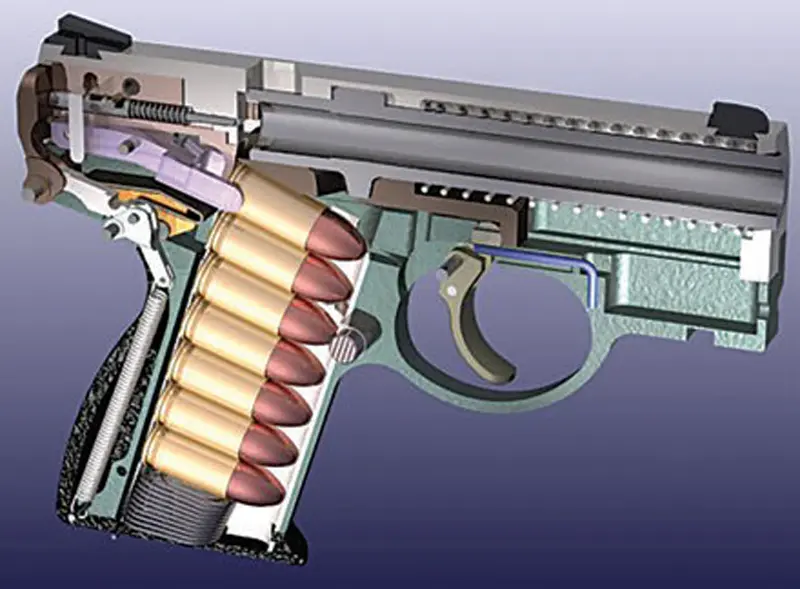
LIKES TO RUN WET
Barrel lockup reveals zero movement. A small opening exists near the barrel’s muzzle, which permits the ice-pick-sized recoil-spring guide rod to exit during recoil. Per Boberg, their creation runs best when wet with lubricants and anti-seize compound. But this small orifice acts as an exit for oozing dirty lube and will stain things unless its holster has a closed bottom.
Moving rearward, what should be its recoil plate is actually the pistol’s large external hammer, which literally slaps the free-floating firing pin. The slide does not lock back when the last round is fired, but can be manually locked to the rear by rotating the take-down lever to the six o’clock position while holding the slide to the rear.
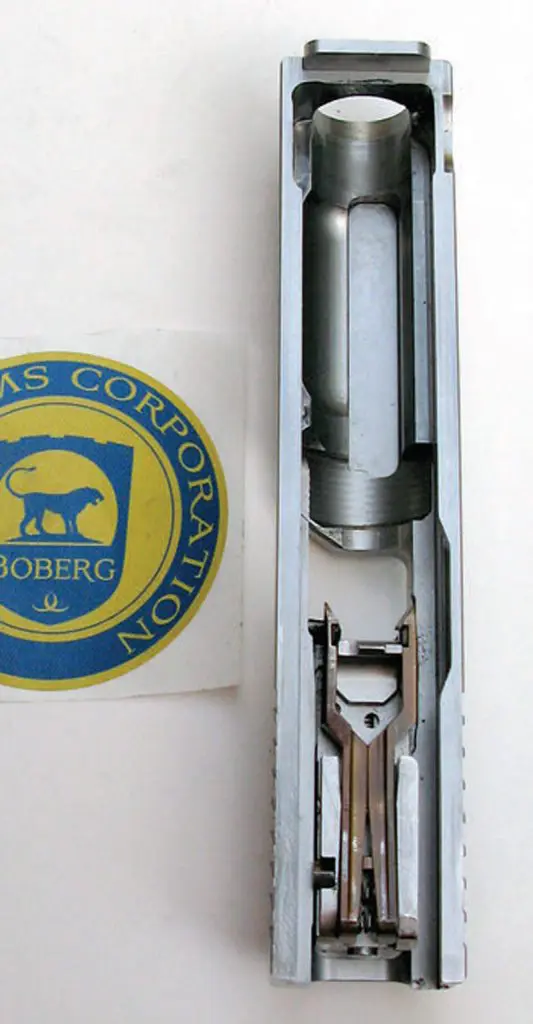
EXCELLENT HOLSTERS
Boberg wisely arranged early on to have 17 different respected holster makers produce Kydex and leather scabbards for this new pistol. Boberg sent me a Cleveland inside the waistband holster. But in perusing the list, I was attracted to Meco Pocket Holsters leather straight-drop paddle holster and requested one from Meco’s owner, Robert Locke.
Meco Pocket Holsters is a one-man shop where Robert forms each holster by hand. So snug are his friction-fit holsters that he includes a rough leather strip to strop the holster’s internal surfaces to loosen it up, so the pistol’s presentation has less resistance. The paddle goes deep into the waistband and eliminates the chance of pull-out when separating gun from leather.
The only problem it exhibited was the tendency of the muzzle end of the Meco to pull away from the body during the draw and impede it. This problem would probably fade away after a sufficient break-in period.
HIGHLY ACCURATE
The XR9-S ran flawlessly right out of the box until the 40th round was expended. My shooting companions were History Channel Top Shot William Bethards and a gunsmith from a large federal law enforcement agency.
To acquire a feel for the little beast, we placed a target at ten yards and shot a series of five-round groups standing with two-handed grips. It seemed to take forever to break the shot while slowly drawing the long-stroke trigger, with approximately 0.50 inch of movement to the rear.
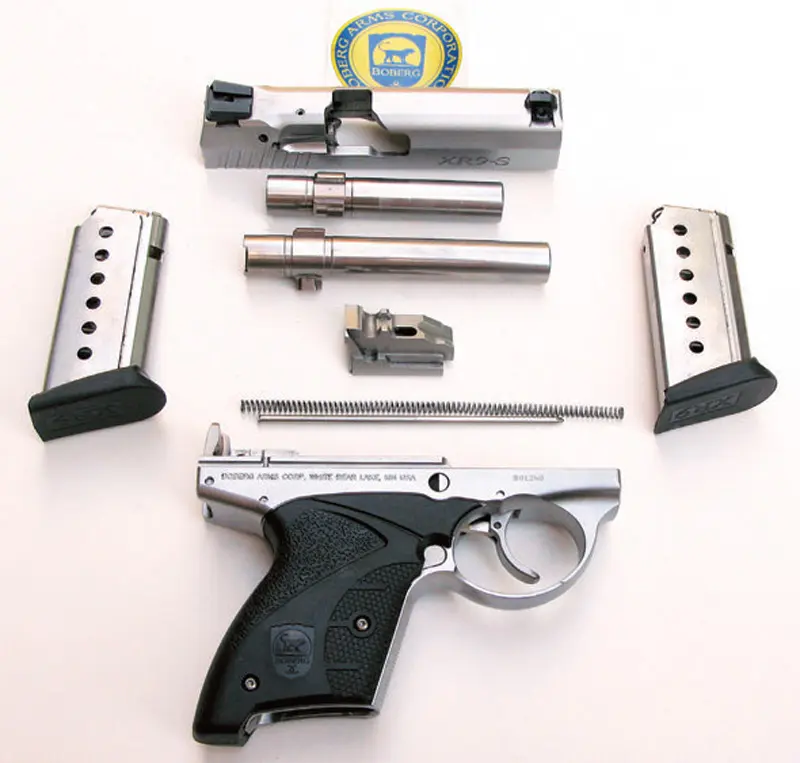
Boberg cautions against staging the trigger. “Staging” is pulling the trigger rearward and holding it momentarily at the edge of sear release and then slowly squeezing the trigger the last millimeter in an attempt to achieve a more controlled ignition without jerking the trigger. However, Boberg warns that such practice could “result in an unintentional discharge.”
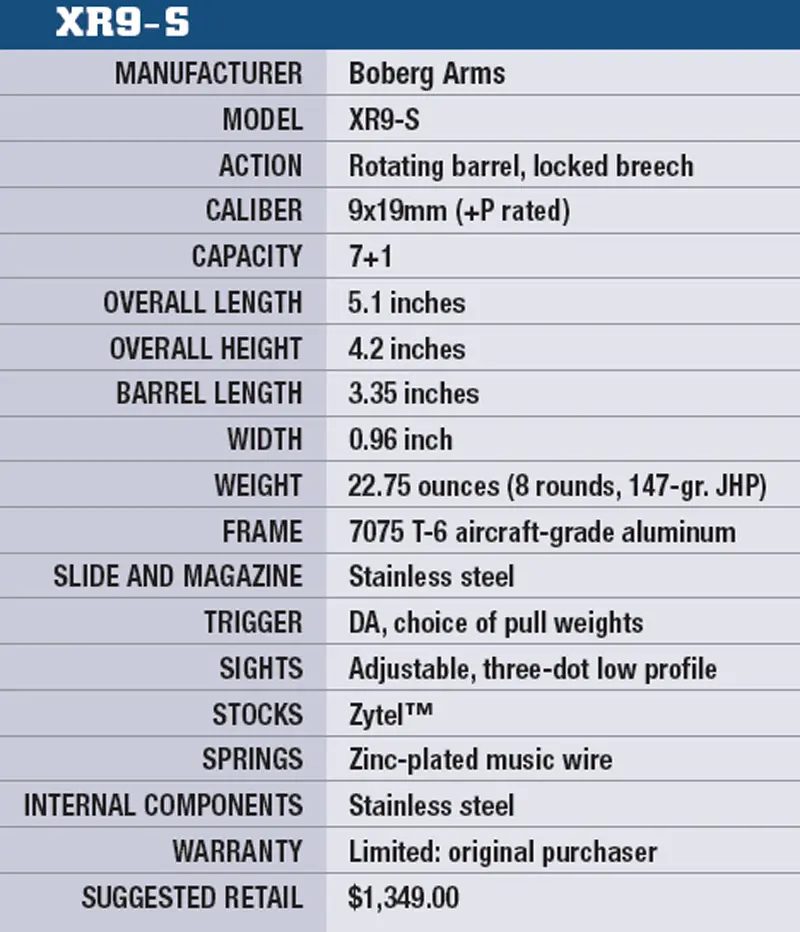
Its light weight produced snappy recoil that caused Bethards to re-grip the pistol between shots with his support hand. He recommended that the grips be replaced with more shock-absorbent rubber versions. All three of us produced first-time cold-bore groups well under two inches. All involved were right-handed shooters and, although the pistol’s sights appeared to be centered, groups had a bias to the right.
Noting that accuracy for a pistol with a 4.4-inch sight radius and heavy trigger was good, Bethards burned up some more 147-grain JHP ammunition picking off 100-yard static steel and swinger targets. The Knuckle Duster can shoot.
I employed a double-action trigger finger hold, which meant that I was well into the trigger and placed it in the middle of my finger’s first joint. With this hold, the sharp edges of the trigger annoyed my finger and should be melted. However, if you use the pad of your index finger and place it across its flat face to manipulate the trigger and it stays there after recoil, you will not have my problem.
FIELD TESTS
Shooting off a bench for accurate groups at a 15-yard target was punishing and I considered taping up my trigger finger. Manufacturer’s claim to the contrary, recoil was quite evident. However, when engaging targets with one or two hands standing, felt recoil was reduced dramatically.
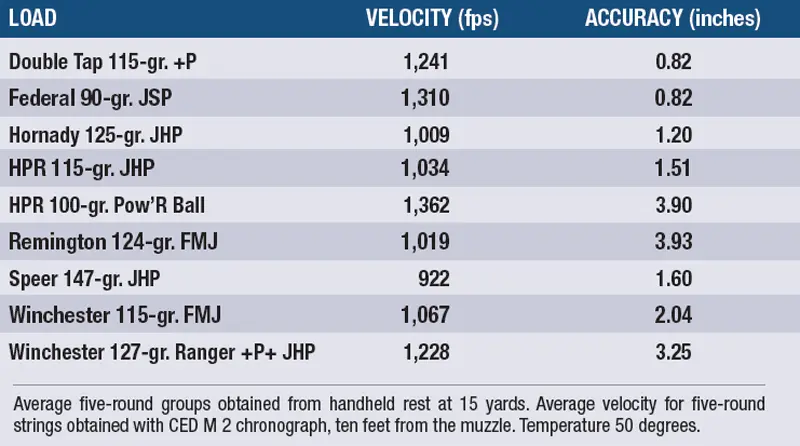
Ten different loads fired produced sub-MOA groups. International’s 100-grain FP (Flat Point) delivered an exceptional 0.720-inch five-round group and it was one of the most pleasant rounds to shoot. Highest individual round velocity of 1,386 fps was obtained from 100-grain Pow’R Ball. When shot from Boberg’s 4.2-inch barrel, velocity increased by only 24 fps. The longer tube added 46 fps to Winchester’s 127-grain +P+ and 35.4 fps to Speer’s 147-grain JHP.
Incidentally, my transition from short to long barrel was a filthy affair, as is cleaning the piece. Unusual lubrication requirements result in the Boberg’s barrel, unlock block and internals to be slathered with carbon-contaminated oil and anti-seize compound.
Commenting on the mess, my armorer colleague said, “A self-defense pistol should function when dry.” I am not a contrarian, but I had to see for myself, so I fieldstripped the piece, cleaned and reassembled it completely dry. I then proceeded to fire 15 rounds of 100-grain International Flat Point without any drama.
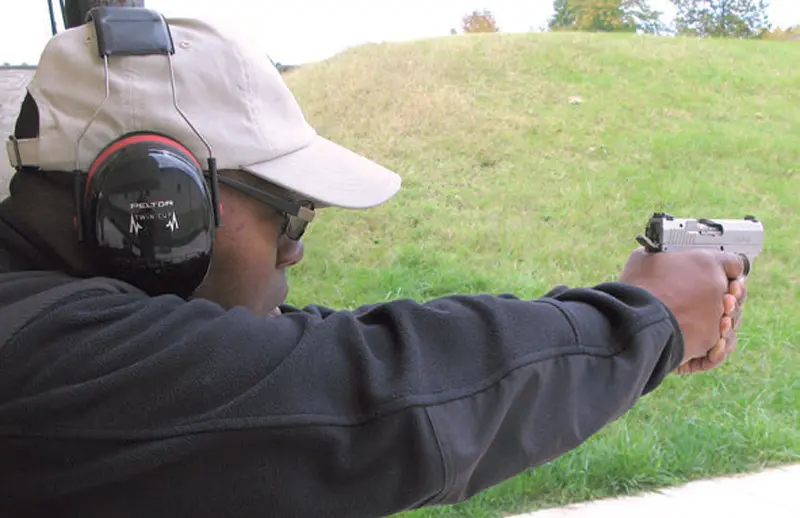
CONCLUSIONS
Boberg’s goal was to duplicate Glock 26 performance in a pocket-sized package. Judging by the numbers we got, the Boberg didn’t make it. There are simply too many differences between the two weapons for Boberg to overcome.
The 26 is a larger, heavier pistol with a longer barrel, different rifling, and higher capacity. Average muzzle velocities for 90- to 147-grain ammunition range from 985 to 1,500 fps. Our Boberg averaged 922 to 1,362 fps for similar loadings. The Boberg’s only advantage here is its smaller and flatter profile.
For the average shooter, its functioning may be difficult to understand. Although fieldstripping and reassembly are challenging, if you follow the manual, they become easier with practice.
For any level shooter, the XR9-S has reliability problems and idiosyncrasies that require careful attention or risk gun malfunctions. The gun should function reliably when it is dry, as our sample did. Excessive lubrication will destroy clothing, and this piece is meant to be carried close to the body.
If possible, its trigger should be reengineered to duplicate the Para Ordnance LDA trigger, and it should lock open when the last round is fired.
However, the accuracy, compactness, high quality of materials and workmanship of the XR9-S are excellent. If Boberg can correct the problems mentioned above, it will become a most desirable firearm.
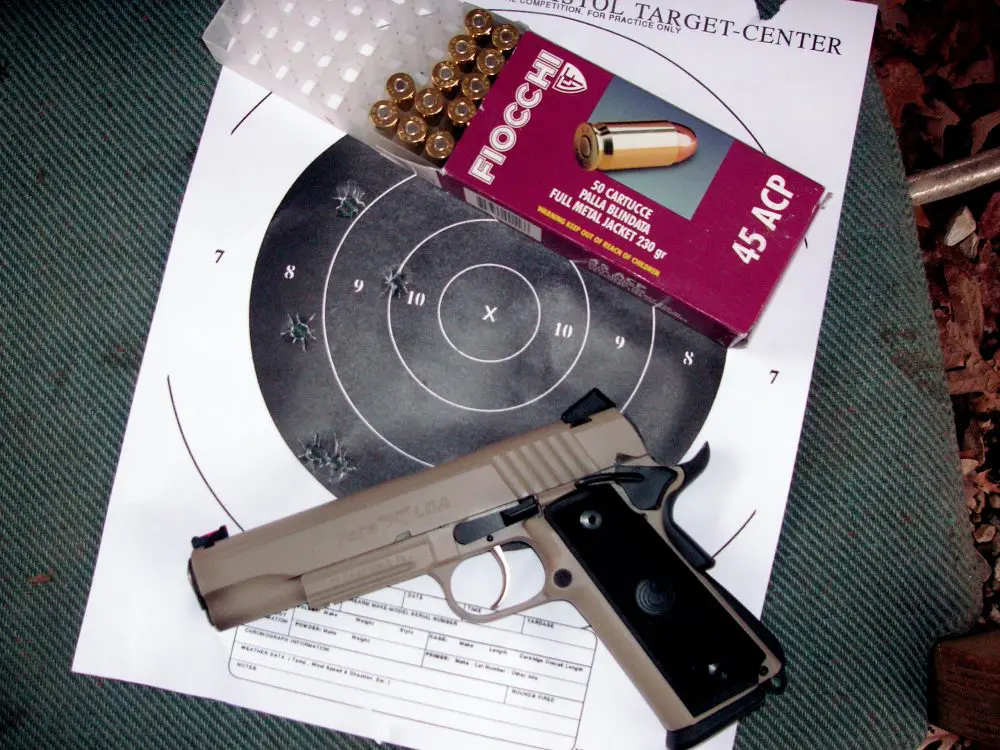
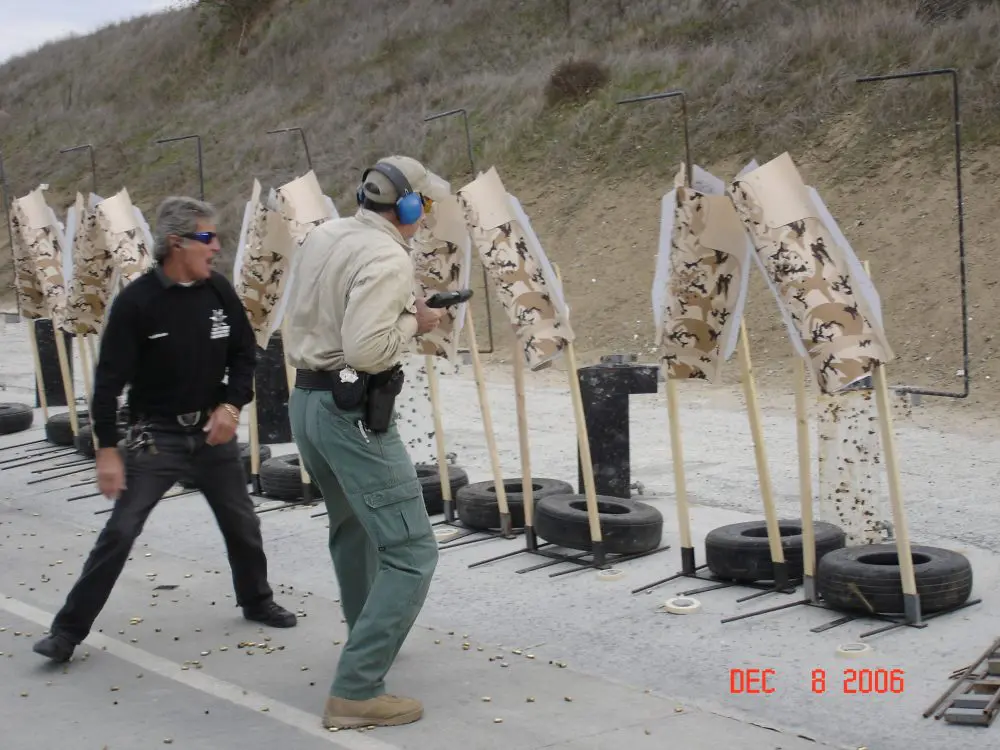
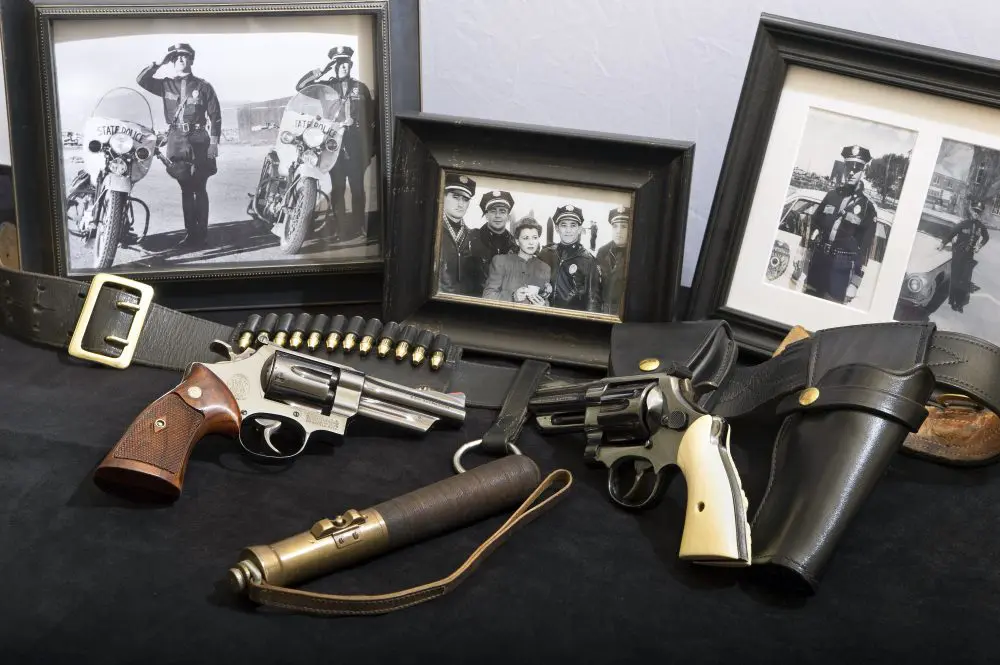

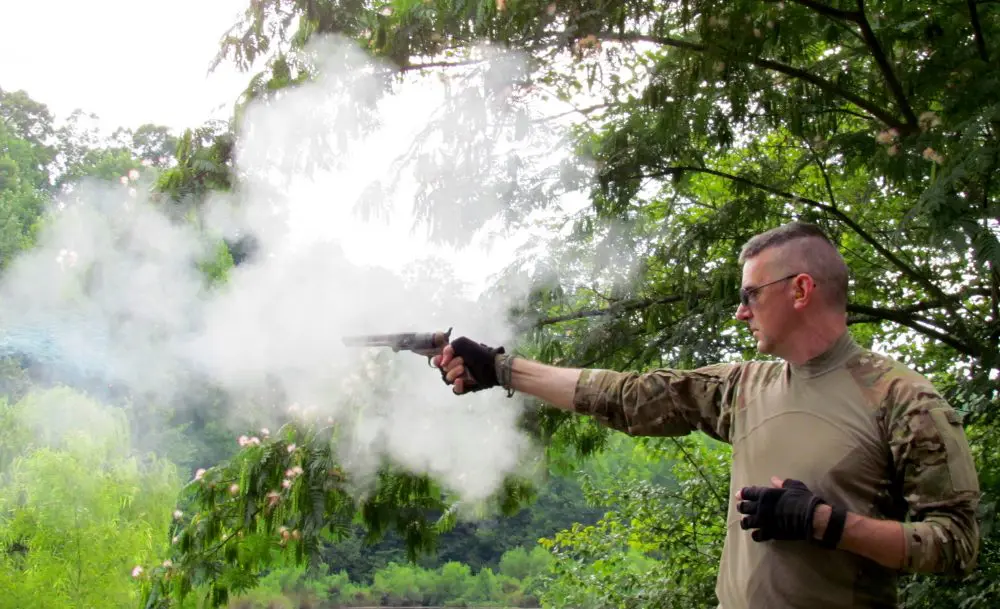
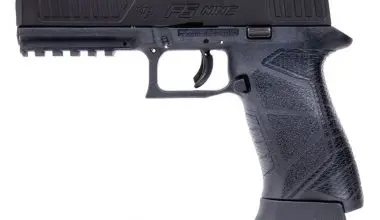
2 comments